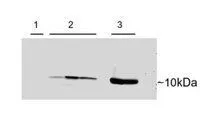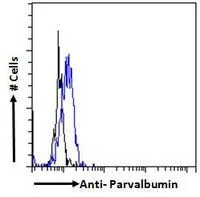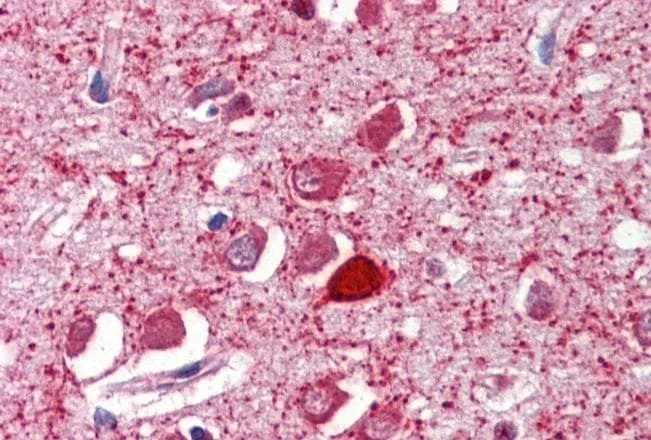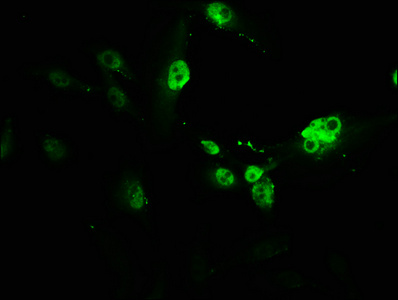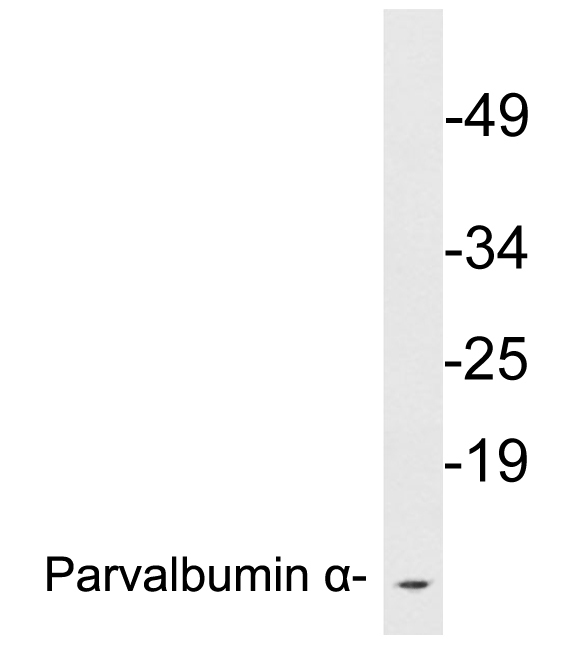
WB analysis of human cerebellum lysate using GTX89558 Parvalbumin antibody, C-term. Dilution : 0.3microg/ml Loading : 35microg protein in RIPA buffer
Parvalbumin antibody, C-term
GTX89558
ApplicationsFlow Cytometry, Western Blot, ImmunoHistoChemistry, ImmunoHistoChemistry Paraffin
Product group Antibodies
TargetPVALB
Overview
- SupplierGeneTex
- Product NameParvalbumin antibody, C-term
- Delivery Days Customer9
- Application Supplier NoteWB: 0.1-0.3microg/ml. IHC-P: 2.5microg/ml. FACS: 10microg/ml. *Optimal dilutions/concentrations should be determined by the researcher.Not tested in other applications.
- ApplicationsFlow Cytometry, Western Blot, ImmunoHistoChemistry, ImmunoHistoChemistry Paraffin
- CertificationResearch Use Only
- ClonalityPolyclonal
- Concentration0.50 mg/ml
- ConjugateUnconjugated
- Gene ID5816
- Target namePVALB
- Target descriptionparvalbumin
- Target synonymsD22S749, parvalbumin alpha, alpha-PV, alpha-parvalbumin
- HostGoat
- IsotypeIgG
- Protein IDP20472
- Protein NameParvalbumin alpha
- Scientific DescriptionThe protein encoded by this gene is a high affinity calcium ion-binding protein that is structurally and functionally similar to calmodulin and troponin C. The encoded protein is thought to be involved in muscle relaxation. Alternative splicing results in multiple transcript variants. [provided by RefSeq, Oct 2015]
- Storage Instruction-20°C or -80°C,2°C to 8°C
- UNSPSC12352203
References
- Transcranial Ultrasound Stimulation Reverses Behavior Changes and the Expression of Calcium-Binding Protein in a Rodent Model of Schizophrenia.Read more

